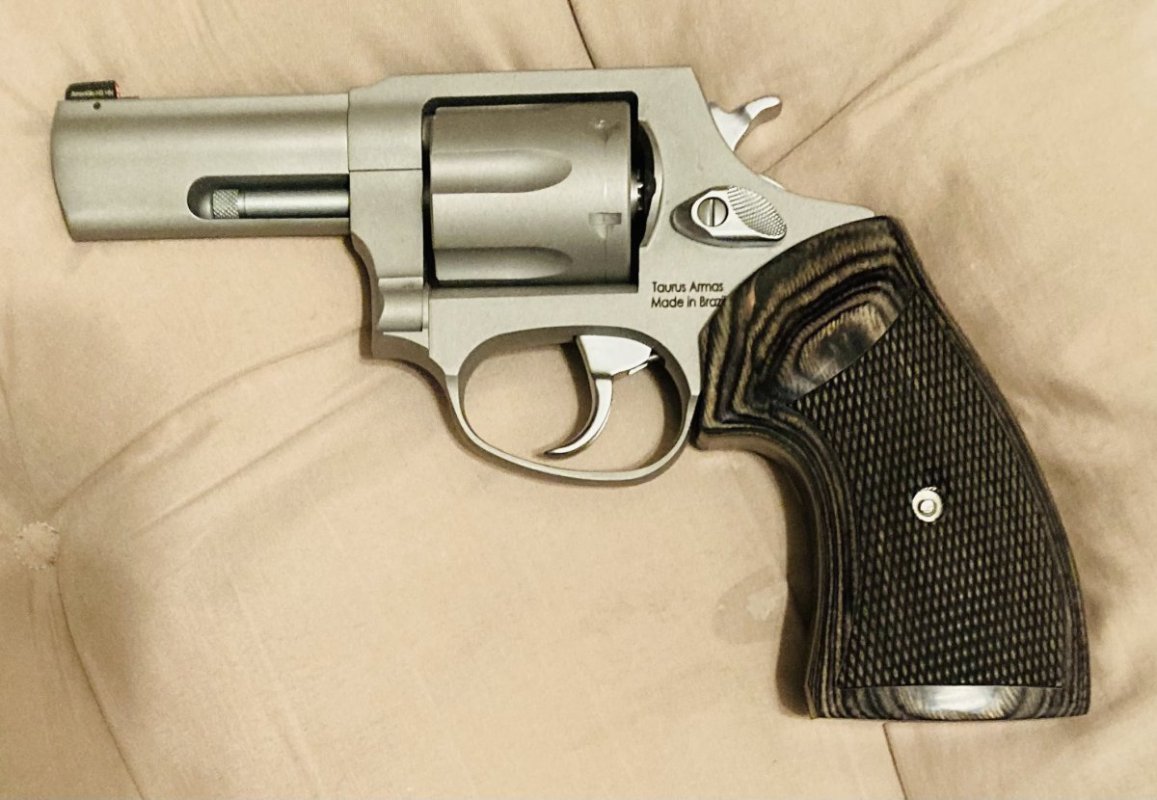I test fired the 1949 Marlin 3030 today after replacing the worn locking bolt and mateing it to the replacement bolt inserted by the prior owner.
All the headspace is gone. There are no high primers and no movement of the bolt once locked in. The gun is still fitted very tight and a single round did not ignite on the first pull since I did not have the lever completly closed. I don't intend to do any more polishing of the locking bolt mateing surfaces, just let it wear in to final fit thru cycling in front of the TV and doing some more shooting.
I see why folks like the Wild West no flop triggers, this model does not have the two piece trigger and sear, its crisp and clean with no take up. I still think it would be prudent to upgrade the tang with the late model trigger blocking safety, I have the parts in hand to do just that.
Accuracy wise, I stuck on a try sight. As you can see its not quite tall enough to be on Zero at 25 yards but the potential accuracy of this 62 year old gal will make the work to slap her cute worth the effort and time. A total of 13 rounds were fired. Three each of my 180g RN handloads to see if it was at least on the paper. A pretty nice starter group for my old eyes.
The next group fired was five each of the Winchester Fusion 150g HP factory loads. More promising performance from inexpensive off the Wall Mart shelf ammo.
The final group fired was five each of the Hornady 160g Lever Evolution ammo. Expensive but it would seem, most accurate of the ammo chosen for todays test.
In all, the action remains tight requiring just a bit of zing to open and close. Sort of like when you hurridly lever in a second round for follow up. But, not so much force you'd think there was something wrong with the ol gal. Like I said, it'll wear in to perfection here quite soon.
All in all, glad I picked this one up. When done its going to make someone a really nice old school hunter and shooter. Who says an Old Girl can't Get Er Done?
All the headspace is gone. There are no high primers and no movement of the bolt once locked in. The gun is still fitted very tight and a single round did not ignite on the first pull since I did not have the lever completly closed. I don't intend to do any more polishing of the locking bolt mateing surfaces, just let it wear in to final fit thru cycling in front of the TV and doing some more shooting.
I see why folks like the Wild West no flop triggers, this model does not have the two piece trigger and sear, its crisp and clean with no take up. I still think it would be prudent to upgrade the tang with the late model trigger blocking safety, I have the parts in hand to do just that.
Accuracy wise, I stuck on a try sight. As you can see its not quite tall enough to be on Zero at 25 yards but the potential accuracy of this 62 year old gal will make the work to slap her cute worth the effort and time. A total of 13 rounds were fired. Three each of my 180g RN handloads to see if it was at least on the paper. A pretty nice starter group for my old eyes.
The next group fired was five each of the Winchester Fusion 150g HP factory loads. More promising performance from inexpensive off the Wall Mart shelf ammo.
The final group fired was five each of the Hornady 160g Lever Evolution ammo. Expensive but it would seem, most accurate of the ammo chosen for todays test.
In all, the action remains tight requiring just a bit of zing to open and close. Sort of like when you hurridly lever in a second round for follow up. But, not so much force you'd think there was something wrong with the ol gal. Like I said, it'll wear in to perfection here quite soon.
All in all, glad I picked this one up. When done its going to make someone a really nice old school hunter and shooter. Who says an Old Girl can't Get Er Done?














